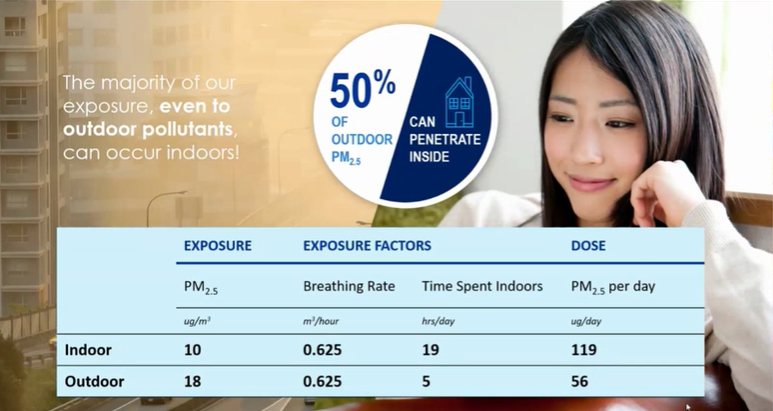In the 4th week of our series on “Five Fundamental Shifts for Healthy Buildings,” by Dr. Joseph Allen, we address a critical question: Are healthy buildings (with clean air) and green buildings (focused on energy efficiency) mutually exclusive goals? It’s an important question as noted in the Opening Address by IPCC Chair at the Ministerial Segment of the HLPF on SD, ECOSOC, General Assembly in July 2023.
“Approximately 79% of global GHG emissions came from production and use of energy in industry, transport, and buildings.”
Dr. Joseph Allen dispels the myth that health and energy efficiency are in conflict, highlighting innovative strategies to achieve both.
BuildingLens: A Model for Climate Adaptation
In discussing this fundamental shift in considering the role of buildings in climate change Dr. Allen has led the call to think of buildings as climate change refuges.
BuildingLens has developed an advanced PM2.5 algorithm that turns buildings into safe havens during wildfire smoke events. Our system not only improves indoor air quality but also communicates with tenants, informing them of actions being taken and why. This proactive approach also offers guidance on no-cost to low-cost measures that occupants can take before, during, and after such events to ensure their safety and comfort.
Strategies for Health and Climate Adaptation
In his talk, Dr. Joseph suggests what is needed to create green buildings (for instance, USGBC LEED certification) can also create healthy buildings, such as those described by Harvard T.H. Chan School of Public Health – Healthy Buildings Program:
- Building Tune-up: Regular assessments and adjustments ensure optimal performance in air quality and energy usage.
- Maximizing Outdoor Air: Intelligent control systems bring in fresh air precisely when and where needed with heat exchangers employed to address energy efficiency.
- Upgraded Filtration: Filters that capture COVID-19 are equally effective against pollutants from wildfire smoke. Dr. Allen shared data from one such building operating with COVID filters on the east coast during wildfire smoke and found levels to be healthy and safe throughout the event.
- Real-time IAQ Monitoring: Continuously monitoring indoor air quality to make immediate adjustments as needed.
- Electrification: Transitioning to electric systems reduces reliance on fossil fuels, benefiting both health and climate.
- Energy-Efficient Systems: Implementing cutting-edge technologies that conserve energy without compromising air quality.
Let BuildingLens Solve Your
Property Management Problems Today
The Cascading Effects of Climate Change
The summer of 2023 brought widespread wildfires, underscoring the dual role of buildings in both contributing to and mitigating climate change. Buildings must be refuges from external pollutants like wildfire smoke. Surprisingly, indoor exposure to outdoor air pollutants like PM2.5 can be significant, with up to 50% penetration indoors. Therefore, advising people to stay indoors is just not good enough without also enhancing filtration and ventilation.
The BuildingLens Approach
At BuildingLens, we recognize that safeguarding health and adapting to climate change with energy efficiency buildings are not mutually exclusive. We’ve demonstrated during pilot studies how buildings in Portland, Oregon can adapt to multiple challenges simultaneously. And Dr. Allen has done this on the east coast. We are confident this can be done across the country and around the world.
Join us in embracing a future where buildings are not only spaces to live and work but also active participants in addressing the challenges of climate change and public health.
